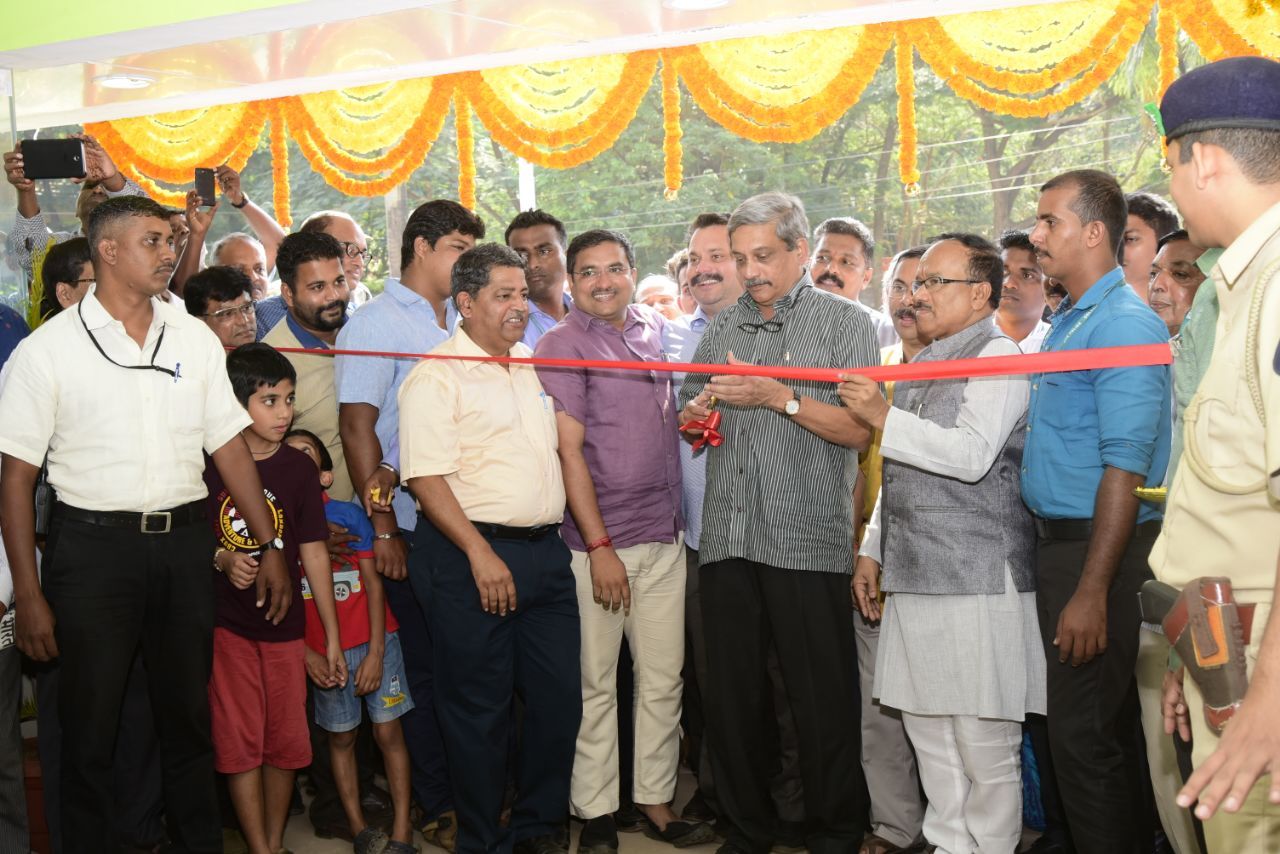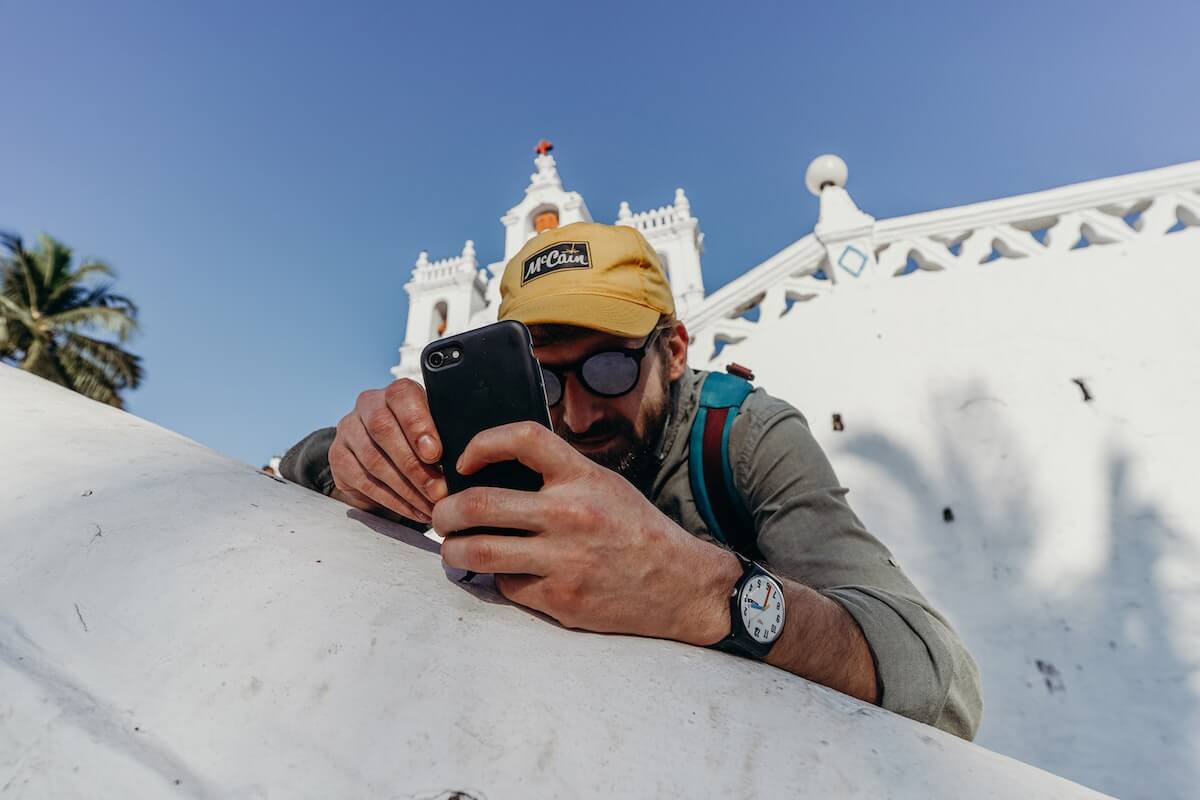Photography today is a growing profession, but earlier it was not. In a time when even imagining that by clicking photos you can earn your living was preposterous, Assavri Kulkarni grabbed a couple of lenses and set out to carve out her space in the world of photographs and earn her livelihood by it. One amongst Goa’s now thriving artistic community, Assavri here stands out. Read on to know more about her, and find out how she did so, as she reveals it with us.
Art is the greatest weapon today; you can move masses by it. Assavri Kulkarni’s artistic photography does the same. Her artwork is so unique that she has a niche clientele who regularly buy from her. Her pointed focus in still-photography creates concentrated beautiful images. Unlike in fashion photography, still-photography requires less hassle of fashion consciousness, and more of teamwork. Her specialization is in food photography. Foods literally look like they are posing for her, her photographs are that clear and tempting! Her skills led her to work with Vogue, Verve, Man’s World, Rolling Stones, and Elle. Describing her work process Assavri explained, “There’s teamwork involved and it’s not just one person and her talents. We worked as a team wherein we were briefed for the shoots instructing us on how they want the picture. I learnt many things during my time there which I think are essential as a photographer. For example, while doing fashion photography for apparels you need to take care that you display the apparels and not the body of the models. It is not always necessary to reveal a model’s body, but if it’s a requirement then you can.”
There are different kinds of photography, and each type has different requirements and skill set. Assavri loved shooting food mostly, and that’s how she got into this line. Assavri’s husband Nirmal Kulkarni, on the other hand, is a researcher who clicks for his research and is involved in environmental conservation.
The beginnings
But where did she begin this journey? As a child, Assavri was very interested in sketching. She wanted to pursue arts and decided to continue her higher studies in Goa College of Arts, much to her parents’ disappointment. Photography came to her by chance! Had she not been a photographer, she would have taken up Hotel Management. “My parents were worried because of the unsurety in the field back then. Now with abundant accessibility in the market of cameras, photography is fun and easy. For the photography course back then they were going to choose only 6 students, which is why we had to work really hard to get into the course. Anthony D’Souza and Willy Goes were my professors there, while Savita Prabhudessai instilled in me the love for designing”. Learning the various arts strengthened her foundation and vision.
Her other interests
Assavri is a special kind of writer. She is one who writes with images. Her recent book is a riot of colours and has Goan blood coursing its veins. It’s called ‘Markets of Goa’. Talking about her book she said, “The concept of the book came during the time I used to go to South Goa to shoot in restaurants. I used to talk to the people in the restaurant and ask them about the nearby places and what all is happening around. So through them, I found out about these markets! We found 68 markets and I believe there are even more in the print published by the Art and Culture department of Goa. The government too was impressed with the work and they agreed to work towards preserving and promoting it as a tourist attraction.” Her second book combines this art of hers with her urge to teach. It is about the basics of photography for beginners who want to learn. In Assavri’s own words, “I have written this book by learning from my own mistakes and I want to give my knowledge of photography to the world. The book is made in the simplest way to so that anyone with a camera can read my book and learn photography”. This learner’s manual is going to be released soon.
Apart from photography, Assavri is also into sketching. Her exposure to nature and still life over the years lend a distinct edge to her sketches. Describing it as a skill that came naturally to her she said, “My work is very different from others and my sketch is very intricate because I divide my space. It keeps my photography going but I don’t exhibit my work to the public. I do upload them on Facebook and then people who know me take my work. I have done drawings on t-shirts which were sold exclusively to buyers. I also have some exclusive buyers like Allu Gomes who has a section of the wall for my paintings in his house. Three of my drawings were chosen to print 200 t-shirts which they bought for their company.”
Challenges
Getting till here wasn’t easy. Assavri shared her tale of struggle with us. “17-20 years back it was a challenge to be a female photographer in the world of press and wedding photographers. People wouldn’t take me seriously. When I was in college I used to take orders for portrait photography. That was when I got an opportunity to shoot in Taj. It was a lucky break for me because Taj was known to hire professionals from Bangalore, and I was a local. It was a moment of pride. I started young and early hence I had the time to establish myself as a photographer.”
The creative world got a big push when everything digitalized and became freely available to all with the click of a button. But it also worked in an adverse way. “The level of creativity among photographers nowadays is dropping, since all are copying from each other. That’s why I advise my students to avoid Googling before going for shoots because it will restrict your creativity and you might not try going further. To think out of the box and make something of your own, your foundation in the art should be strong. If you have the talent it will come to you, otherwise, you will have to work.” She said.
For the future
Assavri has a true Goan heart. She likes to keep everything simple, eat simple and do things as simple as she can. She plans to do a lot more documenting work to document the food, the tribes and people of Goa. She says, “I live by the day and I don’t run after things, whatever comes my way I take it as it is. I enjoy life and I also tell my students to enjoy life and make it simple.” Having been in this field for a handsome 18 years, she also gave us some tips into the profession. “A photographer should plan the day and carry out the day’s work. As a photographer, you have to take care of many things – dress appropriately, carry foods that energize you, keep a watch on the weather if you are doing outsider photography and carry different sets of lenses for different shoots. You need to keep in mind these and many other things which are very essential to be a photographer. You have to combine all the aspects of photography and practice it.”
She cares for the younger generation and would like to tell them to be fearless. “Learn from your mistakes. Sometimes many withdraw themselves and become fearful but one should not let the fear of judging obstruct your way. You can master the art of photography by learning from a professional too, which I didn’t get during my time. I learnt from my mistakes and that is all you have to do.”
On an ending note, Assavri very humbly said, “To some, the achievement is about getting an award or getting a car, but to me, it’s yet to come. ‘Markets of Goa’ is my pride, but my achievement is yet to come.”
Assavri covers fine art photography, nature photography and food photography. She has had exhibitions across India, from Goa to the international markets. “I mostly target international markets which get revenue. My work goes and gets displayed and sold so I don’t need to go there, but if needed the gallery arranges for the tickets and I fly but it doesn’t mostly happen due to time constraints and so on.” Her professionalism is liked by people and so she gets more invites. Despite all this, she says photography isn’t her passion! Confused? Assavri clearly demarcates work from all else. She says, “Most people think photography is my passion, but it is not. It’s my job and I love doing it. My passion, on the other hand, is cooking!”
When one teaches, one becomes better in their field, as they learn a lot by just clearing the doubts of children. Assavri used to have regular workshops when she had a studio in Porvorim. “I gave away the studio because it was rented, and now I work at people’s places. I have workshops in Sunaprant where I used to have regular workshops for children. We used to have 40-50 people aged 5 years on for different batches for every workshop. I wanted a smaller number of children because I wanted to communicate with them and see that they have understood everything of what was taught at the workshop. Now, I enjoy the company of each student and I am very glad that I had a small class. I ask my students to take pictures of the geometrical figures like the circles or straight lines seen in nature. I ask them to capture it on their mobile phones and make them co-relate with human forms, for example, a horizontal thing depicts a sleeping body. There are many things in the environment that we can make use for photography – every line, and every design means something, you just have to give the child the camera and tell them to go and click. Many parents gave positive feedback saying that the workshops were really fruitful, the children started seeing things differently and became more aware of their surroundings.”
As is the case with most professionals in the art world, remuneration is a big problem. Most desire artistic services for free-thinking not much effort goes into it. And the problem perpetuates when some artists provide services for free, upturning the whole market. Assavri was faced by similar people. “Many people followed photography because it was their hobby and not because they wanted to make their profession. Even now people give their images for free while people like me who work hard and survive on those images have to work even harder for our bread and butter.”
Assavri believes, “If my voice wants to shout and do the talking then let my voice do the talking. People say that I need to market myself but I don’t have the need to do it, I will maybe do someday, as and when I need it.” She further added, “Many people make the mistake of making their profession their goal. If one is able to differentiate, it will take them far.”

























